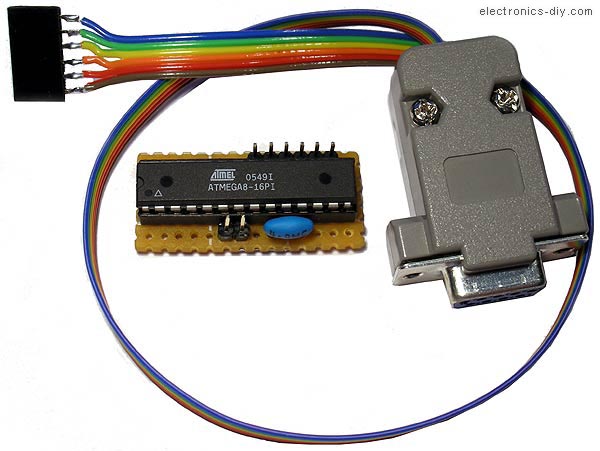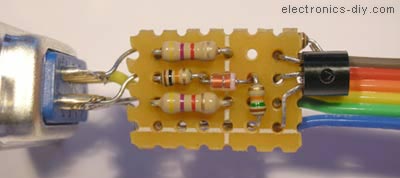Summary of AVR Programmer with ATMega8-16
This article describes a simple, cost-effective AVR programmer designed for easy and reliable programming of most ATMEL AVR microcontrollers. The device consists of an in-circuit serial programmer dongle and a small PCB with a DIP socket for programming microcontrollers, such as the ATmega8-16. It can also be used as a standalone in-circuit programmer for AVR microcontrollers without removal from the target circuit. The programmer uses common parts, fits into a serial connector case, and is compatible with PonyProg software for programming progress monitoring.
Parts used in the AVR Programmer:
- In-circuit serial programmer (dongle)
- Small PCB
- DIP socket (for 28-pin DIP AVR microcontroller, e.g., ATmega8)
- Common electronic components (unspecified)
About AVR Programmer
This simple AVR Programmer will allow you to painlessly transfer hex programs to most ATMEL AVR microcontrollers without sacrificing your budget and time. It is more reliable than most other simple AVR programmers available out there and can be built in very short amount of time.
AVR programmer consists of in-circuit serial programmer (dongle) and small pcb with a DIP socket where you can fit your microcontroller and have it quickly programmed.
You may also use this programmer as a stand alone in-circuit serial programmer that can be used to conveniently program AVR microcontrollers without removing them from the target circuit.
Entire AVR programmer has been build with using common parts and fits in the case of the serial connector. The socket pcb has been created to fit a 28-DIP AVR ATmega8 microcontroller, but you can build a socket pcb for any other AVR microcontroller out there. This AVR programmer is compatible with a popular PonyProg software that shows you a status bar of the programming progress.


